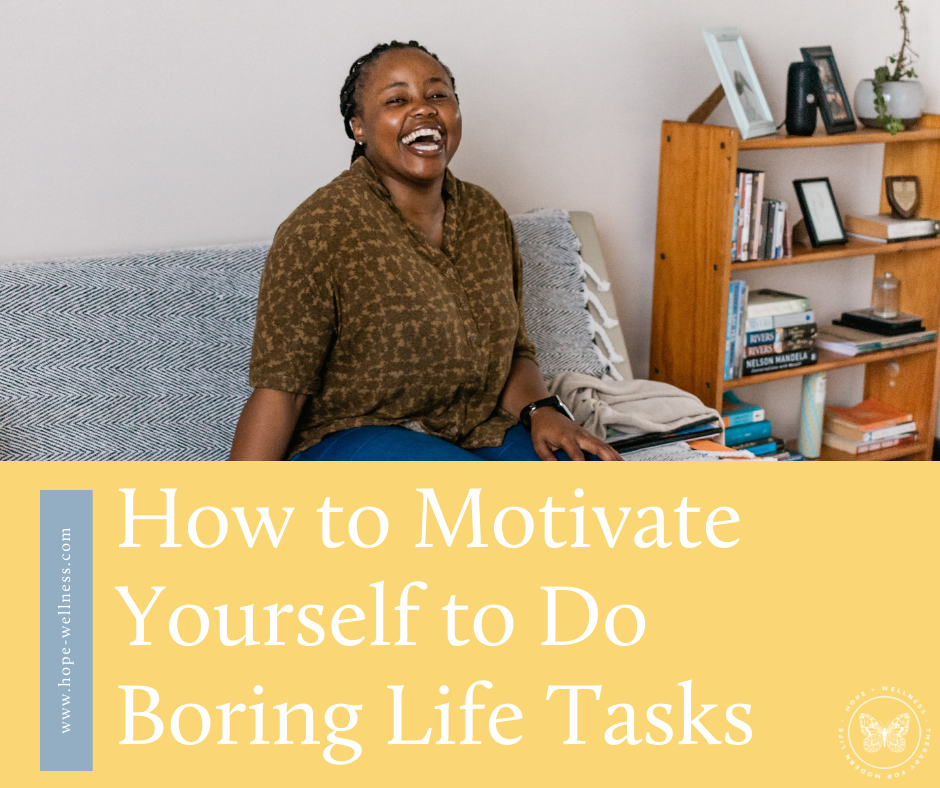
Hope +Wellness Blog
little snippets of advice for everyday challenges many people share

Why Is It So Hard to Build New Habits?
Sometimes, even when we try to make sure we’re following best practices or practical advice for establishing new habits, we still can’t get there. Let’s explore some reasons it can so hard to latch onto new habits.

4 Best Practices for Fact Checking #InstaTherapy Content
What can you do to vet how reliable a mental health resource is on social media?

4 Ways to Deal with New Year Overwhelm
Are you looking for ways to be less overwhelmed in the new year? Here are 4 ways to deal with New Year overwhelm.

3 Tips for Cultivating A More Positive Relationship With Yourself
The word relationship calls to mind our connections with others–with romantic partners, with friends, family members, coworkers, neighbors, etc. But you have a relationship with yourself as well–and it’s the longest relationship you’re ever going to have! That alone makes it worth it to spend intentional time reflecting on your relationship habits and where you want your relationship with yourself to go.

4 Practical Ways to Build New Habits
It can be surprisingly difficult to start doing something new regularly. Doing one small new thing a day (or not doing something) might sound simple, but our brains are complicated, so it doesn’t always end up being that way.
Thankfully, we know a lot more about the human brain than we used to, which can help us make sense of how habits are built in our nervous system. It’s absolutely possible to build new habits that improve your life, it just takes some patience.

Getting Started with Hiking for Mental Health
One easy way to spend time in nature? Hiking! It’s a wonderful way to build both physical and mental health. Here are a few benefits of hiking.

7 Ways to Spend Your Time for Better Mental Health
How we spend our time can be a huge contributor to our health, both mental and physical. It’s important to spend our time in ways that nourish and take care of ourselves (both in our body and in our mind) as well as provide balance so we’re not just treating ourselves like machines who don’t need variation.

Emotional Exhaustion: What Is It & What Can You Do About It?
When you hit that point of emotional exhaustion, it doesn’t just impact your energy level or mood. It also can impact things like your relationships, your ability to engage in your hobbies, your professional performance, your patience level, your self esteem, and even your problem solving skills.

Gentle Movement Tips for A Healthier Relationship with Exercise
If you’ve had a history of disordered eating or disordered exercise habits, or just a difficult relationship with your body in general, the idea of establishing a new routine might feel a little scary. If that’s the case for you, here are 5 tips for working gentle movement into your routine in a way that works for you!

How to Motivate Yourself to Do Boring Life Tasks
Many of us struggle even more this time of year due to the short, darker, colder days. We’re getting less sunlight and our brain is producing more melatonin because of that, which means we’re more likely to be tired all the time!
So how can you motivate yourself to do boring self care tasks?
Hope+Wellness is a mental health practice specializing in the treatment of depression, mood, stress, and anxiety in kids, teens, and adults. This is a blog about living well and finding meaning and purpose in the face of difficult challenges. This is a blog about finding hope.
Archive
- ACT
- ADHD
- Acceptance
- Anxiety
- Authenticity
- Belonging
- Bipolar
- CBT
- Calming
- Change
- Chronic Illness
- Chronic Pain
- Communication
- Community
- Coping Skills
- DBT
- Dating
- Depression
- EMDR
- Emotions
- Entrepreneurs
- Friendship
- Gratitude
- Grief
- Health Psychology
- Hope
- Inspiration
- Intimacy
- Intuition
- Joy
- Letting Go
- Love
- Manic Depression
- Mindfulness
- Miscarriage
- OCD
- Parenting
- Personal Growth
- Positive Vibes
- Quotes
- Relationships
- Resources
- Self-Compassion
- Self-Reflection
- Services
- Sleep
- Spirituality
- Stress Management
- Stress Relief
- Suffering